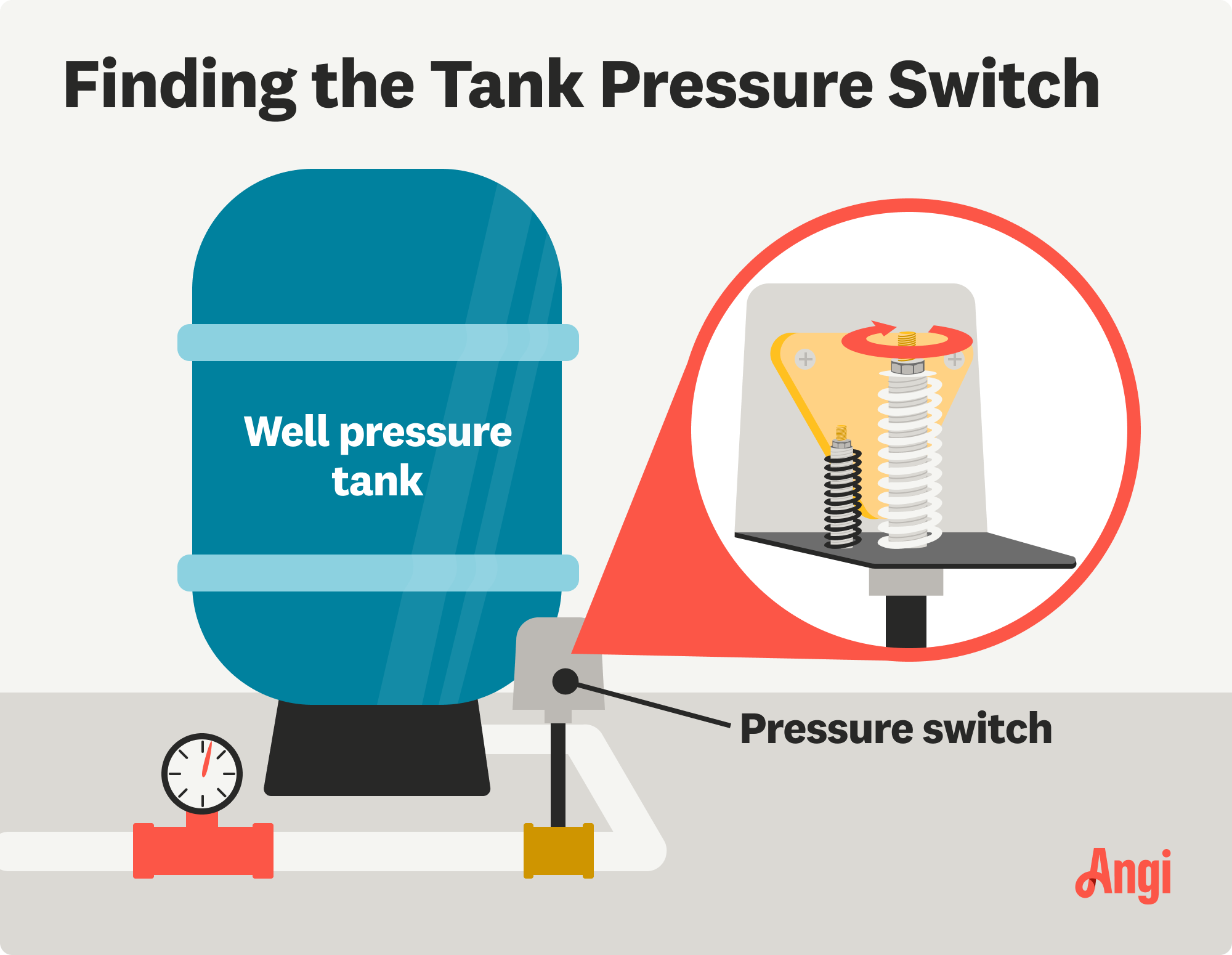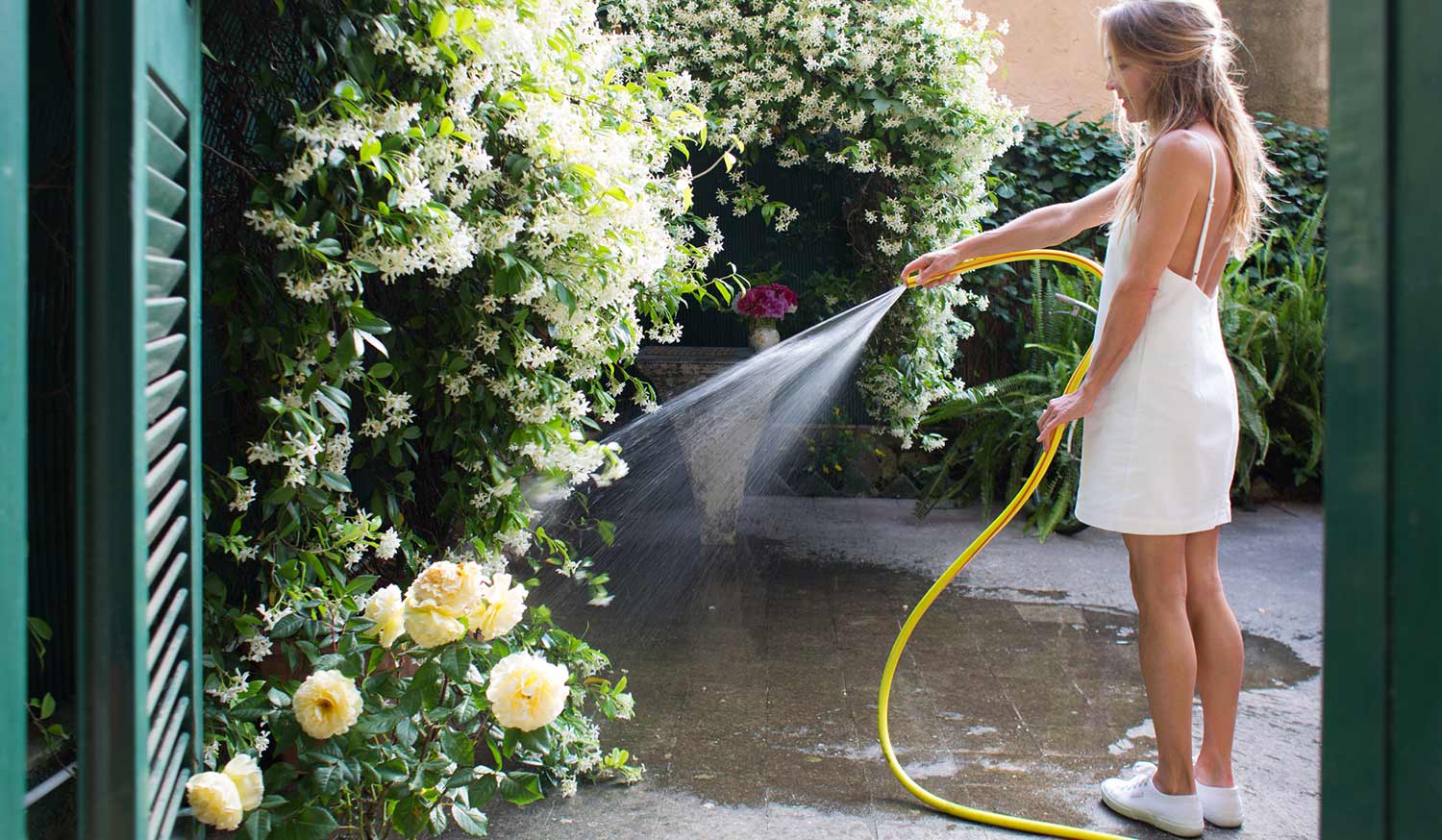6 Common Well Pump Pressure Switch Problems and How to Fix Them
Dry well got you down? Flip the switch for a solution.


The most common pressure switch issues include corrosion, debris, a faulty spring, bad wiring, and loose connections.
If the switch is corroded, it may prevent the pump from turning on or off.
Replacing a switch is quick, simple, and inexpensive, costing $20 to $50 for parts.
Repairing or replacing a faulty pump can be more costly, from $375 to $2,750.
If you’re among the 15% of the U.S. population that uses a domestic well for your water supply, something as simple as a degrading well pump pressure switch can cause serious problems. It can cause a loss of water pressure or even cut off your water supply altogether. Learn how to tell if your well pump pressure switch is worn out and whether it needs replacing.
What Is a Well Pump Pressure Switch?
The pressure switch signals to the well pump when it needs to start or stop pumping water. It does this based on the built-up pressure in the water system. The switch typically has the following range of numbers 20/40, 30/50, 40/50, and they relate to the pound per square inch (psi) pressure levels.
When the well pump’s pressure drops to the lowest “cut-in” number, the pressure switch will turn on, and the pump will fill your tank. It’ll switch off and stop pumping when it reaches the highest “cut-off” number. You can adjust the low and high numbers to any of the three setting options depending on your home's water supply needs.
Where the Well Pump Pressure Switch Is Located

Locating your well pump pressure switch will be your first challenge; its location can vary depending on the type of pump and your home setup. You’ll usually find the switch on the side of a jet pump. However, you’ll find the covered switch’s location elsewhere if you have a submersible pump. Typically, you’ll find it in the basement, garage, or somewhere in your yard, sometimes mounted on a small tube near the pressure tank.
6 Signs Your Well Pump Pressure Switch Is Failing

Here are some common signs your well pump pressure switch is failing.
1. No Water Pressure
If there’s no water flow at all, your pressure switch may be stuck or faulty, preventing the pump from turning on when needed. Check the pressure switch for corrosion or debris. If the switch appears fine, a well pump professional can help diagnose and fix the issue.
2. Low Water Pressure
If water flows weakly despite the pump running, your pressure switch might be improperly set or partially blocked. Adjust the switch settings or clean it to remove debris. Constant low pressure may indicate a more significant issue, in which case you’ll need to call a well pump pro near you for help.
3. Pump Doesn’t Turn On
If your pump doesn’t activate when the water pressure drops below the cut-in level, the pressure switch could be defective or disconnected. Inspect the wiring and switch contacts. If these look fine, consult a repair service to test and replace the switch.
4. Pump Doesn’t Turn Off
When the pump continues to run even after reaching the cut-off pressure, the pressure switch may not be properly calibrated or could be damaged. Try adjusting the pressure settings on the switch. If this doesn’t help, contact a well pump pro to prevent pump overuse.
5. Rapid On/Off Switching
Quick cycling (switching on and off repeatedly) can indicate a problem with the pressure switch or a waterlogged pressure tank. Examine the switch and pressure tank for issues. If you’re still scratching your head, a repair service can troubleshoot and resolve the issue.
6. Waterlogged Pressure Tank
If your tank is full of water with little or no air, it’s likely waterlogged, causing pressure issues and erratic pump behavior. Drain the tank or call a pro to replace it if it’s damaged. An expert can assess whether a new tank or pressure switch adjustment is needed.
Well Pump Pressure Switch Repairs vs. Replacement
There are a few hard and fast rules about repair versus replacement. First, does the faulty item impact your insurance? Your home insurance may not cover water damage if you have tried to repair something that should have been replaced. Check your policy before attempting repairs.
Is the cost of repairing higher or almost as high as replacing the unit altogether? The average cost of replacing a well pump is about $975 to $2,750. A well pump pressure switch costs $20 to $50, and labor can cost between $45 and $200 an hour.
Will the time spent replacing the switch be intrusive to your life or take a short while?
Pressure switch replacement is an easy, fast, and inexpensive repair for a pro compared to the complexity and cost of a complete well pump replacement.
DIY Well Pump Repair vs. Hiring a Pro
New switches aren’t expensive to purchase, but you should only attempt to replace one yourself if you’re confident with electrical components, the power is off, and you’re sure it’s the problem-causing switch.
If you aren’t certain the switch is causing your well pump pressure problems or you’ve replaced the switch and problems persist, call in a local professional. Well pump problems are often wide-ranging, complex, and best left to the pros to diagnose and resolve.





- Well Water Stopped Working? Here Are 5 Troubleshooting Causes and Solutions
- How to Check Your Well Pump: Troubleshooting and Fixes
- How To Get More Pressure From Your Well: Everything You Need To Know
- Common Well Pump Problems and How To Fix Them
- How To Increase the Water Pressure From Your Well
- When and How To Test Your Well Pressure Tank
- How Much Electricity Does a Well Pump Use? What You Need To Know for Your Home
- 3 Reasons Why Your Light Switch Won’t Turn Off
- 9 Tips to Help Increase the Water Pressure in Your House
- 8 Common Problems With Geothermal Heat Pumps










